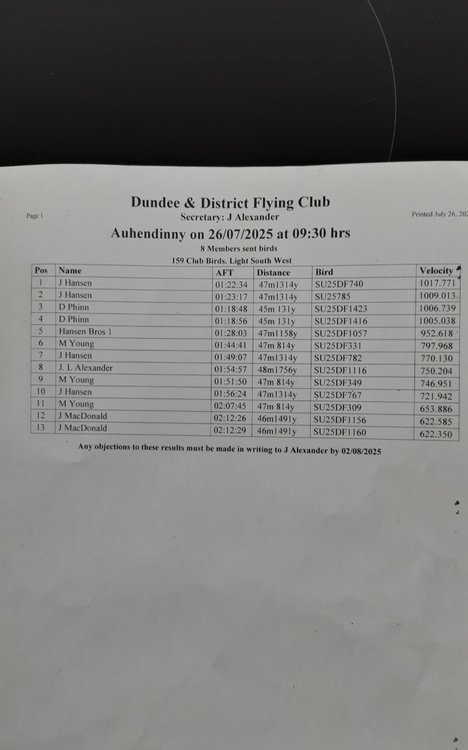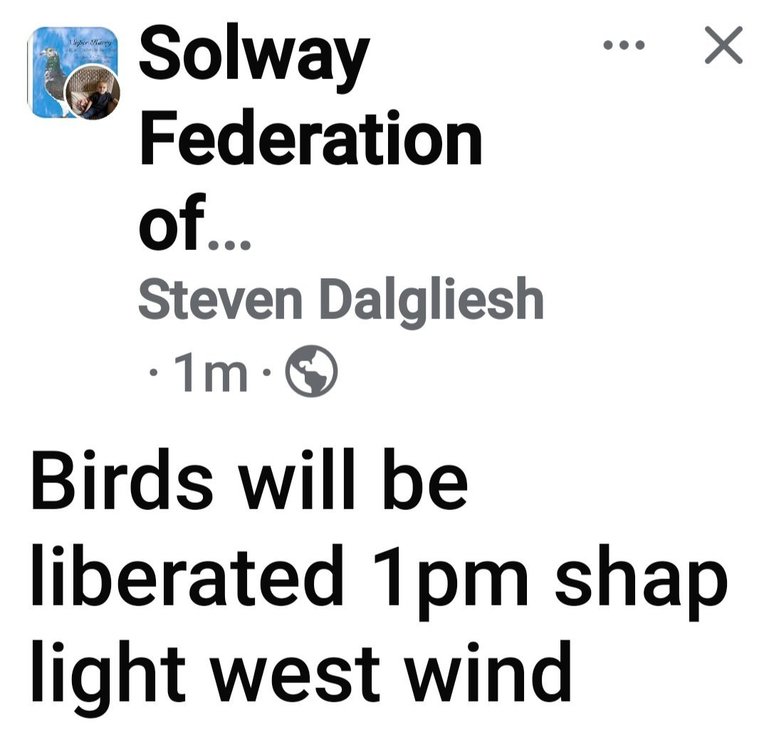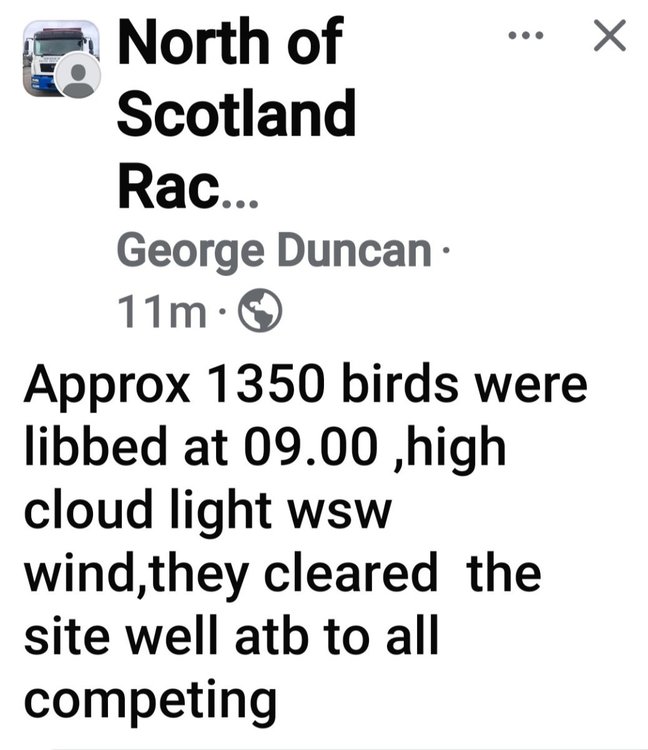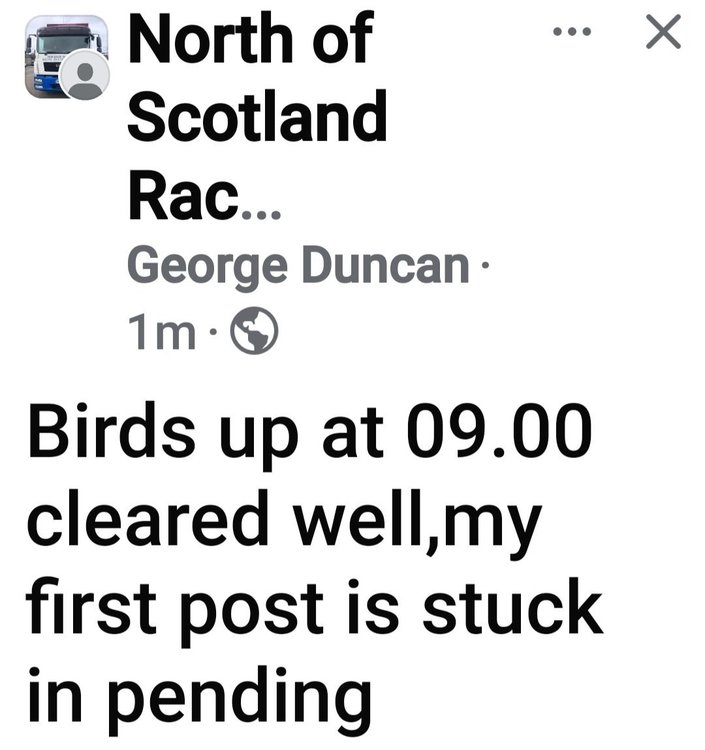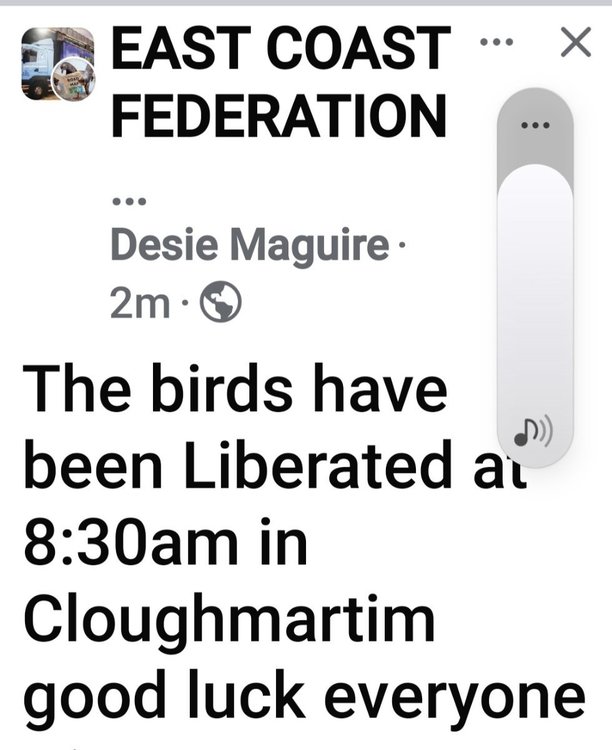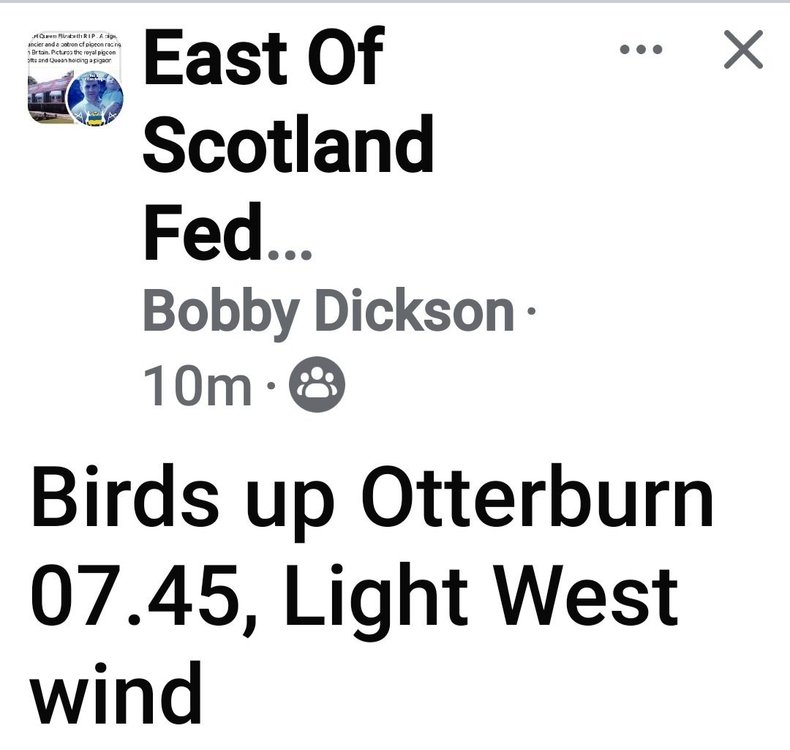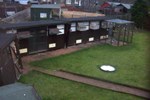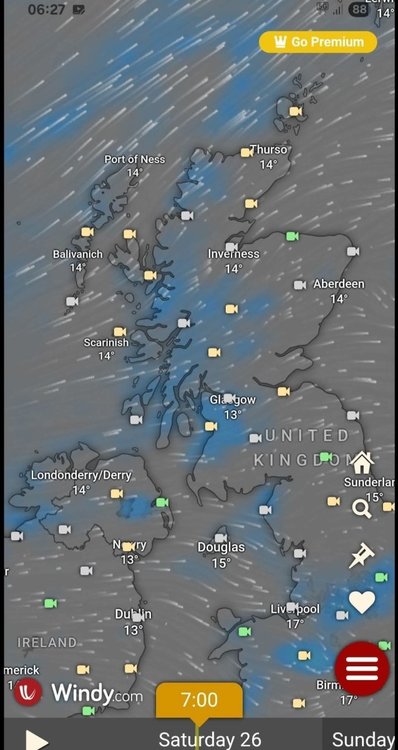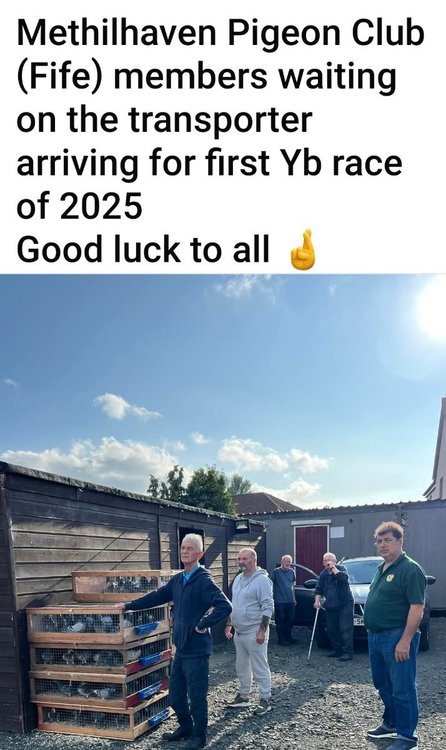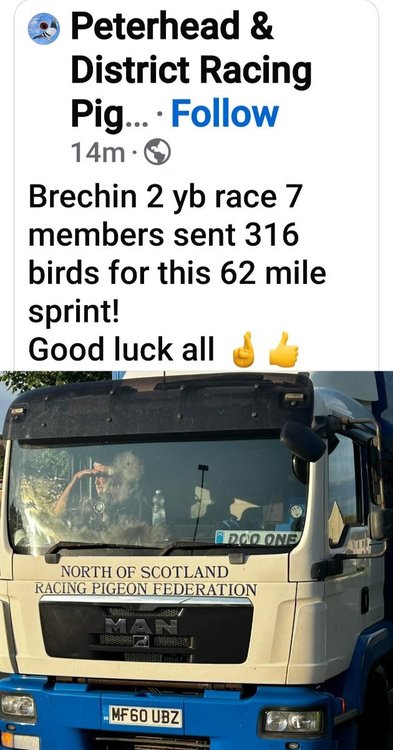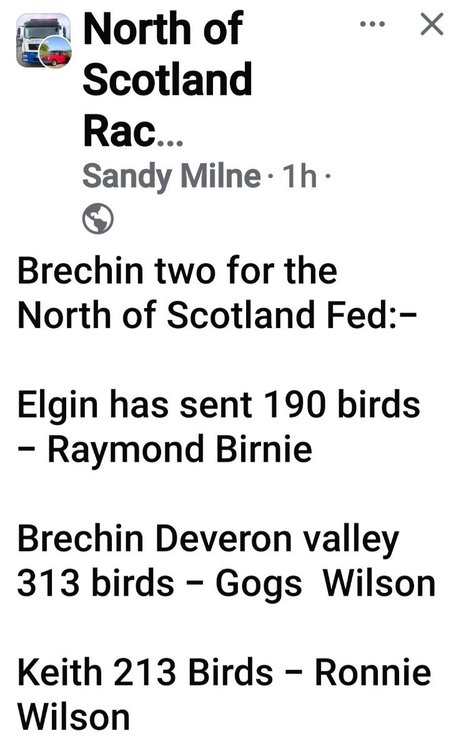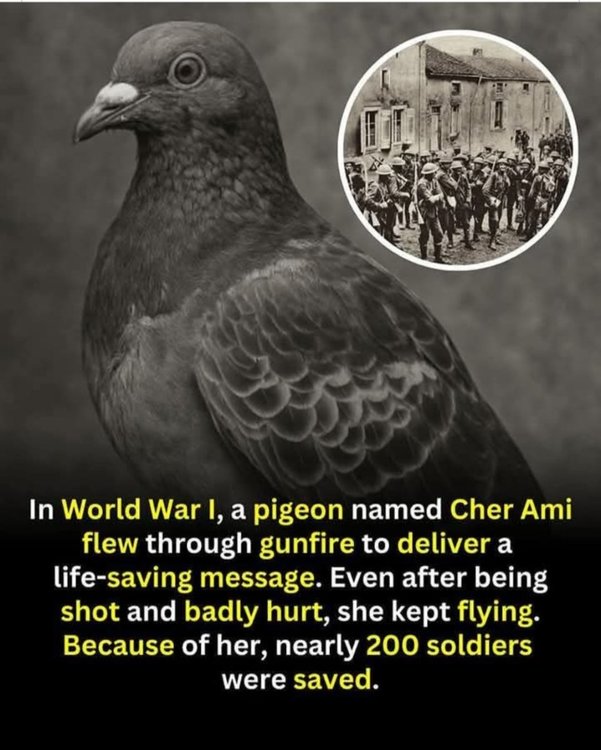Copied from Facebook 26th July
Yearling - Grand Final Ballygawley 272mile
aaand there off!
Morning guys, 30 brave wee yearlings are on there way liberated at 6:15am into a very light westerly wind and broken sky with temperatures of around 14°c
Lets hope for a clear run up into Scotland and that they are left alone to do what they do best!
I'd like to thank Darren for driving out to the lib site this morning to assist and verify our liberation once again your help and advice throughout the year has been second to none and invaluable, if only there were more like you in the sport 😁 Darren Thompson
Also a special mention my dad who at the age of 71 works tirelessly alongside me to ensure the smooth running of the day to day tasks of running this loft, without him we just couldn't possibly do what we do!
🌟 If anyone wants to comment with a guess the velocity while we wait for liberation for the chance to win a place in our 2025 Winter Series you'll have untill the birds are liberated, you're guess must be within 2ypm of the winning Velocity 😁
Return Rate:
Trainer One - 98%
Trainer Two - 100%
Trainer Three - 98%
Trainer Four - 100%
Trainer Five - 100%
Trainer Six - 95%
Trainer Seven - 98%
Trainer Eight - 100%
Hotspot One 98%
Hotspot Two 95%
Hotspot Three 72%
Hotspot Four 70%
Hotspot Five 63%
Hotspot Six 96%


